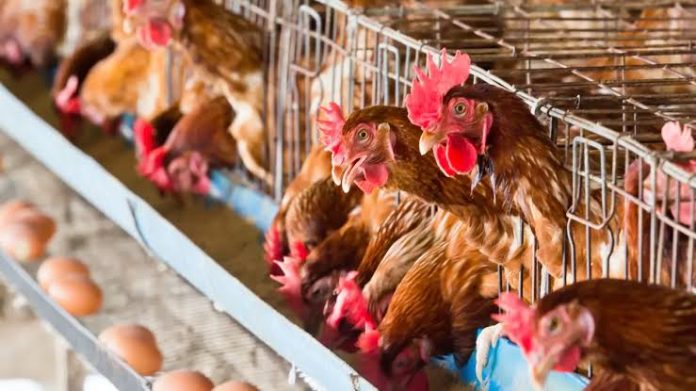 E- book offer of the day:
E- book offer of the day: 
 Poultry farming business report Volume 5
Poultry farming business report Volume 5
8 Proven Strategies for Maximizing Poultry Egg Production
 Learn More
Learn MorePoultry egg production can be both exciting and fruitful, offering a plethora of benefits to beginners and seasoned farmers alike. To start off, selecting the right breed plays a pivotal role in determining your flock’s egg-laying potential.
Different breeds exhibit varying levels of productivity, and considerations such as climate resilience, available space, and personal preferences should guide your choice. Rhode Island Reds, Leghorns, and Sussex are celebrated for their prolific egg-laying abilities.
Before making a final decision, it’s essential to research and understand the specific characteristics and requirements of each breed.
Establishing an optimal environment for your flock is another critical aspect. A well-ventilated and adequately lit poultry house contributes significantly to stress reduction among hens. Stress is a known inhibitor of egg production, so ensuring a comfortable temperature range of 60-75°F (15-24°C) is crucial.
Additionally, proper insulation aids in temperature control. Well-designed nesting boxes and clean bedding create a conducive atmosphere, encouraging hens to lay eggs in a stress-free environment.
Adequate space per bird is also paramount to prevent overcrowding, which can lead to aggression and diminished egg production.
Creating the Ideal Environment:
Taking a closer look at the environment, ventilation is crucial for maintaining optimal air quality and preventing respiratory issues among the flock. Poor air circulation can contribute to the buildup of ammonia, leading to respiratory distress and decreased egg production. Install proper ventilation systems and regularly clean and sanitize the poultry house to ensure a healthy living space.

Proper lighting is equally important. Natural sunlight is ideal, but supplemental artificial lighting becomes essential during the shorter days of winter. Provide 14-16 hours of light per day to stimulate consistent egg-laying. Use timers to automate the lighting schedule, ensuring a regular and predictable environment for your hens.
Purchase this compelling ebook instantly. 
 21 most important poultry diseases with prevention, control & treatment
21 most important poultry diseases with prevention, control & treatment
However, it’s essential to balance this with periods of darkness for adequate rest, as constant lighting may lead to stress and health issues.
Balanced Nutrition:
Offering a well-balanced diet is fundamental for maintaining optimal health and promoting consistent egg production. Commercially available layer feeds are formulated to meet the specific needs of laying hens, providing the right balance of protein, vitamins, and minerals.
READ ALSO How to multiply your productivity 10 times in poultry broilers farming business
Adequate protein is essential for feather production and egg development. Additionally, supplement the diet with calcium-rich sources, such as oyster shells, to support strong eggshell formation.
Water quality is often underestimated but is a critical factor in ensuring a healthy flock. Clean and fresh water should always be available, as water intake directly influences egg production.
Dehydration can lead to decreased egg output and adversely affect the overall health of the hens. Regularly check water sources and clean containers to prevent contamination and ensure a consistent supply of clean water.
Strategic Lighting:
Delving deeper into the strategic use of lighting, understanding the role of photoperiod manipulation is key. The manipulation of day length through artificial lighting can extend the productive laying period of hens. During the shorter days of fall and winter, providing additional hours of light compensates for the natural decrease in daylight.
However, it’s crucial to gradually adjust lighting schedules to avoid stressing the flock. Monitoring their response and adjusting accordingly will help fine-tune the lighting strategy for maximum effectiveness.
Selective Breeding:
For those seeking to enhance egg production over the long term, selective breeding emerges as a potent strategy. Selective breeding involves pairing hens and roosters with desirable traits, such as high egg-laying capacity and strong health. Over successive generations, this practice can lead to a flock with improved genetic traits for increased productivity.
Invest in this knowledge-packed ebook promptly.  20 questions to ask your poultry farm manager everyday
20 questions to ask your poultry farm manager everyday
Keep detailed records of breeding pairs, hatch rates, and egg production to track the success of your selective breeding program.
It’s a patient but rewarding approach that can result in a flock tailored to your specific needs and goals.
READ ALSO Factors That Affect Layer Egg Size
Health Monitoring:
Vigilant health monitoring is paramount in preventing and addressing potential issues that could hamper egg production. Regular health checks should include observations of physical appearance, behavior, and egg quality.
Implement a vaccination schedule in consultation with a poultry veterinarian to safeguard your flock against common diseases.
Additionally, quarantine new birds before introducing them to the existing flock to prevent the spread of infectious diseases. A proactive approach to health management contributes to a resilient and productive flock.
Egg Collection and Storage:
Efficient egg collection is a crucial aspect of poultry egg production that often goes overlooked. Establish a routine for collecting eggs at least twice a day to prevent potential issues such as egg breakage, contamination, or egg-eating behavior among the flock.
Provide clean and well-bedded nesting boxes to encourage hens to lay eggs in designated areas. Regularly inspect eggs for cracks or abnormalities, discarding any damaged ones promptly.
Storing eggs in a cool and humidity-controlled environment, ideally below 50°F (10°C), helps maintain their quality and extends their shelf life.
Implementing proper egg collection and storage practices ensures that the eggs reaching the market or your table are of the highest quality.
Parasite Control:
Effective parasite control is paramount to maintaining the health and productivity of your poultry flock. Internal parasites such as worms can significantly impact egg production by compromising the nutritional absorption of the hens.
Implement a regular deworming schedule, consulting with a poultry veterinarian to choose the appropriate deworming products.
Additionally, external parasites like mites and lice can cause stress and discomfort, leading to reduced egg production. Use dust baths, diatomaceous earth, or poultry-friendly insecticides to control external parasites.
Regularly inspect your flock for signs of parasitic infestations, such as feather loss or lethargy, and take prompt action to address any issues.
Record Keeping:
Maintaining meticulous records of your flock’s performance is a practice that cannot be overstated. Keeping a detailed log of daily egg production, any changes in behavior, and health issues provides valuable insights into your flock’s well-being.
By identifying patterns and trends, you can proactively address issues, fine-tune management practices, and optimize your flock’s overall productivity. Our modern farm management software or even a simple spreadsheet can be valuable tools for organizing and analyzing this information effectively.
Takeaway
In conclusion, the journey to maximizing poultry egg production involves a holistic and attentive approach. Each of the discussed strategies contributes to creating an environment that encourages consistent egg-laying. By understanding and implementing these practices, you not only boost the productivity of your flock but also ensure their well-being and longevity.















